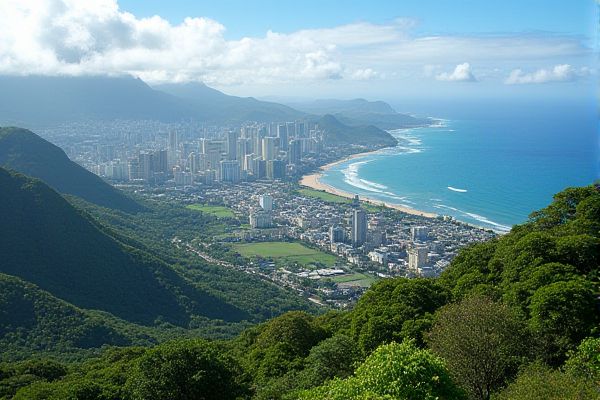
Insights from Hawaii residents and expatriate communities: Understanding local customs and traditions. The high cost of living. Climate and weather patterns. Importance of community involvement. Transportation and traffic conditions. Local cuisine and food culture. Housing availability and costs. Job market and employment opportunities. Island-specific healthcare services. Outdoor recreation and activities.
Understanding local customs and traditions.
Understanding local customs in Hawaii involves respecting traditions such as removing shoes before entering homes, avoiding horn honking, and appreciating the significance of leis, which symbolize love, kindness, and respect. Additionally, embracing the spirit of Aloha, which includes caring for the community and showing goodwill, is deeply embedded in Hawaiian culture. For more insights, [Exploring Unique Hawaii Customs: A Traveler's Guide](https://www.aloha-hawaiian.com/blog/exploring-unique-hawaii-customs-a-travelers-guide/) offers a comprehensive look into these rich traditions and how to respectfully engage with them.
The high cost of living.
The high cost of living in Hawaii is a significant concern for both residents and expatriates, with expenses such as rent, utilities, and groceries being notably higher than the national average, largely due to the state's remote location and reliance on imported goods. Hawaii's cost of living is remarkably 63.35% higher than the national average, with Honolulu being the most expensive city. Here, rent averages around $2,390 per month, and other costs like utilities and groceries also exceed national averages. For a comprehensive understanding of these expenses and practical tips on how to manage them, The Broke Backpacker offers valuable insights on the Cost of Living in Hawaii. This makes budgeting crucial for maintaining a comfortable lifestyle in such an economically demanding environment.
Climate and weather patterns.
Hawaii residents experience a consistent tropical climate with two main seasons: summer (May to October) and winter (November to April), characterized by mild temperatures, moderate humidity, and significant rainfall differences between windward and leeward areas. The weather is highly localized, allowing for sunny spots even during the wettest months from November to March. To explore more about Hawaii's unique weather patterns and how they might affect your trip planning, visit the official Go Hawaii website.
Importance of community involvement.
The importance of community involvement in Hawaii is highlighted through listening sessions that empower communities to make decisions supporting local needs, ensuring diverse voices are part of the conversation on Hawaii's clean energy future. These efforts address community energy needs, costs, resilience, and renewable sources. For more information, visit the Hawaii Community Engagement page.
Transportation and traffic conditions.
Transportation in Hawaii is complex, with residents and expatriates relying on various options such as shipping cars from the mainland, buying or renting cars, using public transit, walking or biking, and utilizing ride-sharing services. Car rentals are highly recommended to be booked in advance due to high demand, and local rental companies can offer more flexible terms and lower rates. For more insights on transportation options in Hawaii, visit The Traveling Traveler to explore detailed recommendations.
Local cuisine and food culture.
Hawaiian cuisine is a vibrant blend of traditional and contemporary dishes, influenced by various cultural groups including Native Hawaiians, Japanese, Filipinos, Chinese, and others. It features unique fusion dishes like Spam musubi, tempura with local ingredients, adobo, pancit, and lechon kawali, reflecting the islands' rich culinary mosaic and deep connection to the natural world. To learn more about the diverse flavors and dishes, visit this Hawaiian Cuisine exploration that delves into what people in Hawaii eat.
Housing availability and costs.
Hawaii's housing market is notably challenging, with high demand and escalating home prices, creating stark regional disparities. Prospective homebuyers find themselves contending with an average home price of $850,343 and a median of $784,500, subject to variations in areas like Urban Honolulu, Hilo, and Kahului due to factors such as inventory and economic conditions. The Cost of Living in Hawaii, particularly concerning housing, remains exceedingly high. On Oahu, the median sales price for single-family homes has reached $1,122,000, with condos not far behind at $500,000. Renting is similarly prohibitive, as a one-bedroom apartment in Honolulu commands an average monthly rent of $2,100, exacerbating an ongoing housing crisis influenced by numerous vacant investment properties. In Honolulu alone, the situation is aggravated by around 35,000 homes left empty by non-residents. In response, authorities propose an Empty Homes Tax to mitigate this crisis by funding affordable housing initiatives and deterring speculative vacancies.
Job market and employment opportunities.
The job market in Hawaii is largely driven by tourism and retail, with significant opportunities also in construction and manual labor. Skilled trades such as electricians, tile installers, and AC repair technicians are in high demand and can command high hourly rates. It is often necessary to already be a resident of Hawaii to secure full-time employment. For more detailed insights, you can visit the Living in Hawaii website to explore the dynamics of moving to Hawaii and finding a job.
Island-specific healthcare services.
Hawaii residents, particularly those on outer islands, face significant challenges in accessing healthcare, including geographic isolation, limited system capacity, long wait times, and the need to travel to Oahu or the mainland for specialized care. Many rely on traditional practices and family support due to mistrust of Western healthcare and the holistic approach of traditional methods. As highlighted in the KFF Issue Brief, these challenges underscore the importance of culturally competent care practices that integrate both modern and traditional healing modalities to effectively address the unique health needs of Native Hawaiian or Pacific Islander adults in Hawaii.
Outdoor recreation and activities.
Hawaii residents often express concerns about the impact of tourism on outdoor recreation areas, noting increased traffic, overtaxing of physical resources, and changes in the experience for long-time users, particularly in coastal and wilderness areas. For those interested in a deeper understanding of these issues, the General Population Socio-Cultural Report provides comprehensive insights into the challenges faced by local communities. It addresses how these factors affect sustainability efforts and outlines potential strategies for balancing tourism with preserving Hawaii's unique environmental heritage.
